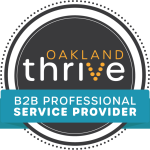Most marketing teams today focus their efforts on trying to increase traffic to the company website, with the thinking being that the more people who visit, the more leads and customers will be generated. While there is a grain of truth to this strategy, and it does provide results up to a point, it ignores a subtle point which could be even more effective in increasing your conversion rate optimization.
By trying to get more conversions from your existing traffic, you can be even more effective than you would be by driving a high volume of visitors to your site, who may just leave without converting. The secret to getting more out of your existing traffic centers on the principles of conversion rate optimization, and that’s what we’ll focus on in this guide.
What is Conversion Rate Optimization?
You’ve probably heard a lot about conversion rate optimization, although you may not have quite understood what it’s all about. In a nutshell, it’s a process that enables people to take some kind of desired action when they visit your website.
By providing optimal elements on any given web page, a business can make it much more likely that a site visitor will convert into a solid prospect, or perhaps even a customer before they leave your site. The rate at which visitors convert to leads or customers is a key metric in marketing because it tells you how effective your website is at causing these conversions.
When Should your Business Use CRO?
It’s not really worth your while as a business to engage in conversion rate optimization projects until you know that your website is regularly attracting a high number of visitors. There’s no point in trying to convert website visitors if you don’t have a good volume of them coming to your site in the first place. There are several ways that you can drive visitors to your website, for instance through your blog, via social media, or some other channels.
These steps should be considered precursors to CRO projects because you’ll need a good volume of visitors at your site before it becomes worth your while to try to convert them into leads or customers. The actual formula for determining conversion rate is very simple: you just divide the number of conversions produced by your web page, by the number of visitors to your web page.
Best Conversion Rate Optimization Marketing Strategies
There are quite a few CRO marketing strategies that you might want to try in order to boost your conversion rate. Here are some of the most successful strategies currently being used by marketers:
Text-based CTA’s
-
- – it’s always a good strategy to include a call to action in your blog, even though they don’t always produce the desired results. An alternative to this would be to create a text-based CTA, which would be a standalone text line which is linked to a specified landing page. The reason this can be more effective, is that people tend to ignore a great many of the traditional CTA’s currently included on a web page, but if you disguise it somewhat as an H3 or H4 bolded text, that’s something which has a whole different look, and might encourage visitors to click on it.
Test your landing pages
-
-
- – typically a website visitor will become a lead after visiting a landing page, which makes that landing page extremely important. That being so, it’s your worth your while to
- on your landing page so you can find out which of the two performs better. Some of the things you should test for are images, content offerings, website copy, and page design.
-
Add strategic messages
-
- – it could be highly advantageous to add messaging capabilities to those web pages which are high performers for your company, for instance, pricing or product pages. You may even want to implement chatting capabilities, where if a person has been on a page for a minute or longer, you immediately offer to help them find something or answer any questions.
Optimize exceptional blogs
-
- – if your company has had an active blog for a year or longer, during that time you have likely created some very popular blogs. For those blogs which have had high web traffic, you should optimize them so they become useful tools for conversions. Perhaps the CTA needs to be clarified, or a content offer needs to be synchronized with the content of the blog – whatever modifications are necessary, make good use of your most popular blogs by optimizing them for more conversions.
Use re-targeting
- – the majority of people who visit your website will not convert, at least not the first time through. By re-engaging these visitors, you stand a better chance of achieving a conversion. Re-targeting involves providing people who have visited your website with online ads while they’re visiting other websites. By re-presenting your website copy to them, you’ll get them thinking about your products and services again and hopefully gain a new convert.
Getting Started
One of the most common ways of choosing projects for conversion rate optimization is to subject each project to the PIE test, which assesses their Potential, Importance, and Ease. For each of the projects which you might undertake, you should consider each of these three aspects, so that you end up with a quantitative score that will indicate project priorities.
The first question centers on the Potential for improvement that a project can have, and you should assign a value from 1 to 10 on this question. Next, assign a similar value for the Importance of the project, and how valuable it will be in terms of return to your company. Lastly, assign a value for how Easy or difficult it will be to implement this project. Now all you have to do is add up these three numbers and divide by three, and you’ll have a representation of where this project stands in terms of desirability for implementation.
Compare this number to the number you get for any other projects, and it should be fairly clear which projects will return the most value to the company, and which should be undertaken first. This methodology may not be absolutely perfect, but it certainly does provide a starting point for assessing where you should center your efforts on projects related to conversion rate optimization.
In essence, it gives you a number that represents the greatest bang for your buck. Now that you’ve got some projects identified and ranked, it’s time to roll up your sleeves, and start working on your conversion rate optimization!






